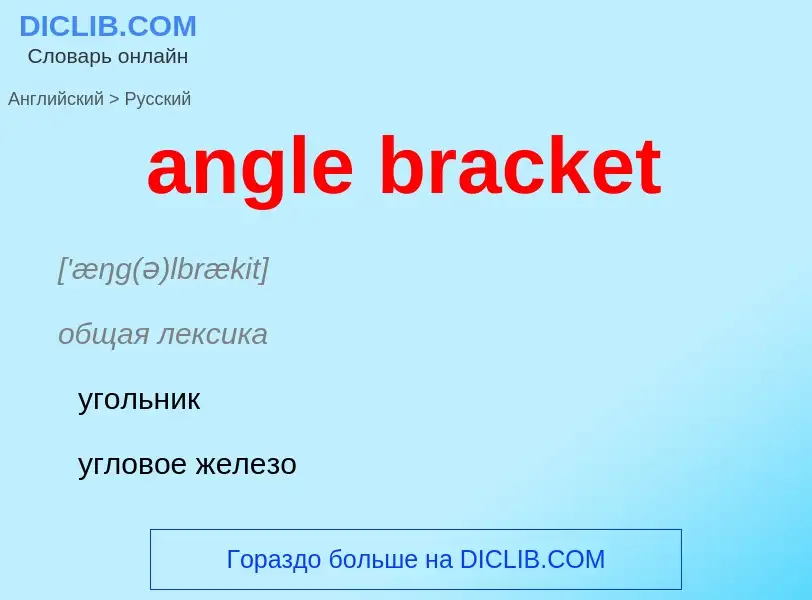Translation and analysis of words by ChatGPT artificial intelligence
On this page you can get a detailed analysis of a word or phrase, produced by the best artificial intelligence technology to date:
- how the word is used
- frequency of use
- it is used more often in oral or written speech
- word translation options
- usage examples (several phrases with translation)
- etymology
angle bracket - translation to russian
['æŋg(ə)lbrækit]
общая лексика
угольник
угловое железо
угловая
ломаная скобка (<>)
консоль
кронштейн из уголка
строительное дело
Т-образный кронштейн (иногда усиливаемый подкосом)
Definition
Wikipedia
A bracket, as used in British English, is either of two tall fore- or back-facing punctuation marks commonly used to isolate a segment of text or data from its surroundings. Typically deployed in symmetric pairs, an individual bracket may be identified as a 'left' or 'right' bracket or, alternatively, an "opening bracket" or "closing bracket", respectively, depending on the directionality of the context.
There are four primary types of brackets. In British usage they are known as round brackets (or simply "brackets"), square brackets, curly brackets, and angle brackets; in American usage they are respectively known as parentheses, brackets, braces, and chevrons. There are also various less common symbols considered brackets.
Various forms of brackets are used in mathematics, with specific mathematical meanings, often for denoting specific mathematical functions and subformulas.


